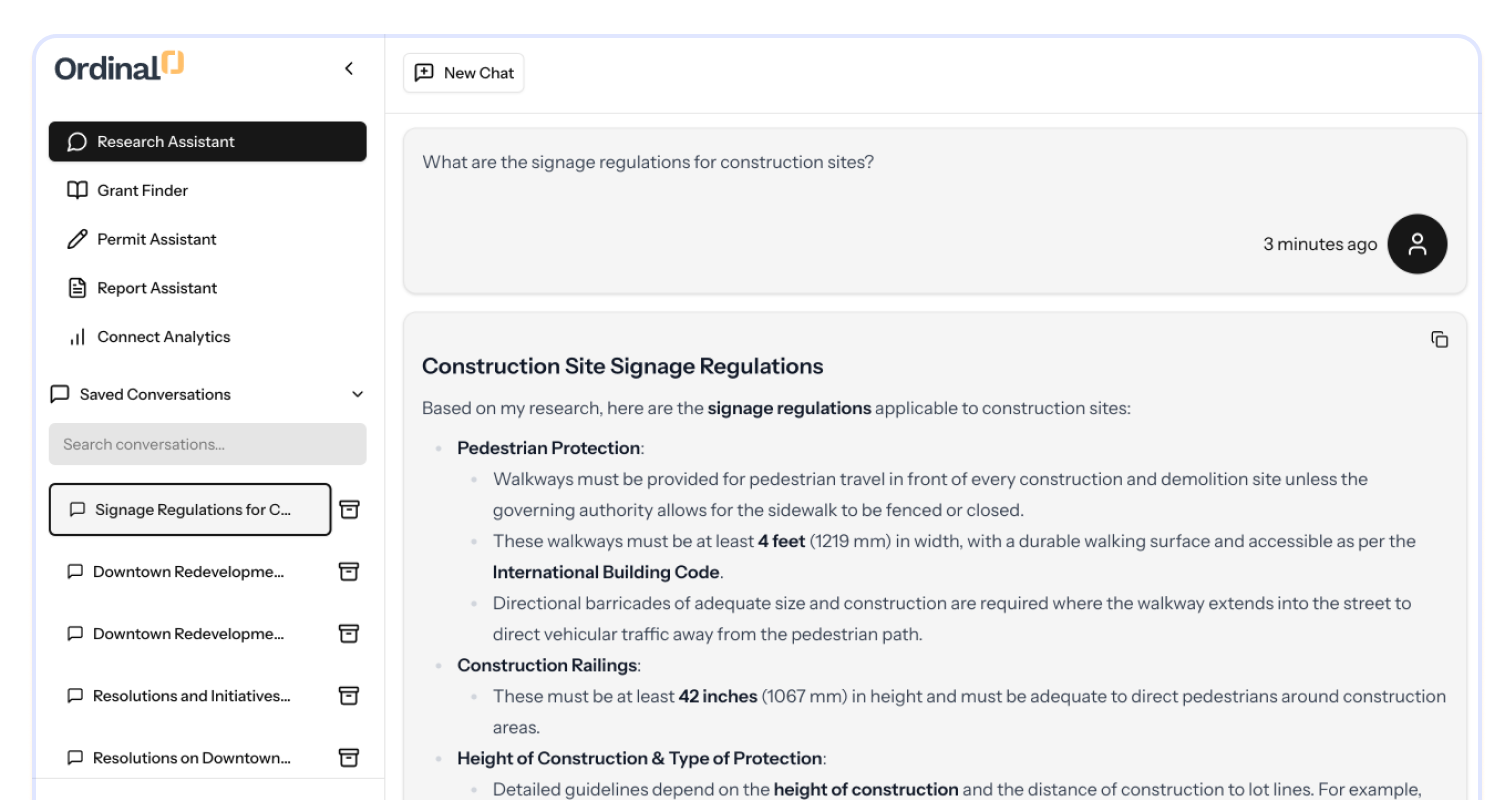
Published on
September 24, 2025

.png)
Cities everywhere are trying to find better ways to answer resident questions, reduce staff overload, and make policies easier to navigate. Chatbots powered by AI hold a lot of promise—but there’s a real decision to make: do you build one in-house or buy something that’s ready to go?
Let’s break it down, honestly.
Some cities have the right setup to build their own solution. Maybe you’ve got a tech-forward innovation team, or your IT department wants full control over data and design. That’s great, and there are clear upsides.
👎Cons:
Tips from our team if you build:
The most important aspect of your chatbot is accurate answers. As seen with the NYC City chatbot, providing inaccurate responses, or hallucinations, can not only steer residents in the wrong direction, but can open up your city to legal issues. Our team mitigates this risk by using a Retrieval-Augmented Generation (RAG) to ground answers in your own policies. If you are building your own bot, be sure to specify that it must only give answers based on the documents you give it to train on, and ideally every response has a source link or reference.
Also:
Many cities don’t have the bandwidth to build from scratch. That doesn’t mean they can’t lead on innovation. A well-designed AI tool built specifically for local governments can get you live faster, with fewer surprises.
Tools like Ordinal Connect offer plug-and-play AI powered by your city’s documents and policies. They’re often designed specifically for small to mid-sized cities without large tech teams.
What to look for in a good vendor:
Some cities build internal tools but still license external chat tech. Atlanta’s ATL311 bot was built on a commercial AI platform (Zammo AI), others are using a custom ChatGPT (which is risky unless done well) – but still required significant staff time and seems to carry branding from the third-party provider.
We’ve worked with cities that tried both routes. Some built great tools in-house. Others started that way, hit delays, and switched to something pre-built to serve their residents faster.
You don’t have to make this a forever decision. What matters most is giving residents and your staff clear answers and freeing up your team’s time to focus on what only your people can do.
If you’re not sure where to start, we’re happy to show you what’s possible and how other cities have handled this exact choice. Just ask!
Ready to see Ordinal in action? Book some time with our team and we’ll show you just how valuable this could be for you and your staff.
